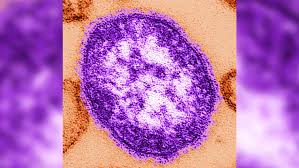What are the 4 types of heart Failure?
uthored by Dr. G Dimpu Edwin Jonathan, Consultant - Interventional Cardiologist, Aster RV Hospital Heart failure refers to any situation where the heart is unable to adequately pump blood to the rest of the body. Even

uthored by Dr. G Dimpu Edwin Jonathan, Consultant – Interventional Cardiologist, Aster RV Hospital
Heart failure refers to any situation where the heart is unable to adequately pump blood to the rest of the body. Even though heart failure sounds much like a stroke or heart attack as it is more commonly known, it is not.
Heart failure refers to a condition where the heart cannot keep up with its workload and as a result the body may not get enough oxygen to function properly. Repeated stress on the heart that is already going through heart failure without any treatment can lead to a heart attack, which can be fatal.
So, to help you take care of your heart health better, let’s take a look at the four types of heart failure and how you can identify and treat them.
What Are The 4 Different Types of Heart Failure?
Structurally the heart has two sides, which is divided into the atriums and ventricles. Heart failure can occur in any of these sides and parts, which contributes to the four types of cardiac failure. So, let’s take a look at its four different types.
Left Sided Heart Failure
The left side of the heart, namely the left ventricle, provides most of the heart’s pumping power, and as such it is larger in size compared to the other chambers of the heart. There are two types of heart failures that can occur on the left side of the heart. Let’s examine them.
Systolic Heart Failure
Systolic heart failure refers to a condition where the muscles of the left ventricle are weakened and can’t contract properly. This leads to the heart being able to pump only a fraction of the required blood circulation.
Diastolic Heart Failure
Diastolic heart failure refers to a condition where the left ventricle muscles become stiff and are not able to relax properly. This results in the heart not being able to fill up with blood properly between each beat, resulting in low circulation across the body.
Right Sided Heart Failure
Heart failure on the right side of the heart is generally caused due to left sided heart failure. When there is a failure on the left side of the heart, it causes increased fluid pressure in the heart, which damages the right side. Right sided heart failure leads to the heart losing pumping power and blood backing up in the veins.
Congestive Heart Failure
Congestive heart failure causes a slowdown in the blood leaving your heart. This causes a backup of blood in your veins, which leads to inflammation in tissues known as edema. The first signs of swelling are generally noticed in the ankles and legs. Apart from that, fluid buildup can also happen in the lungs as well, leading to pulmonary edema where patients get respiratory distress, especially when lying down.
How To Identify the Different Types of Heart Failure?
The best way to identify different types of heart failure is by studying the symptoms of heart failure. These symptoms appear gradually and need to be monitored closely under medical guidance to keep yourself safe from any severe consequences health wise. Here are some of the most important symptoms to monitor for heart failure.
- Fatigue and weakness in regular life.
- Wheezing
- Irregular heartbeat or rapid heartbeat
- Shortness of breath during any physical activity or when lying down
- Inability to exercise
- Nausea and loss of appetite
- Inability to hold attention or be alert.
- Chest pain
- A cough that doesn’t go away or brings up white or pink mucus with blood spots in it
These symptoms are very important in helping you identify the signs of cardiac failure. If you are exhibiting any of these symptoms, it is important for you to understand your risk factors and get the necessary medical attention if the symptoms persist.






